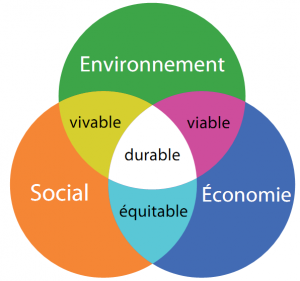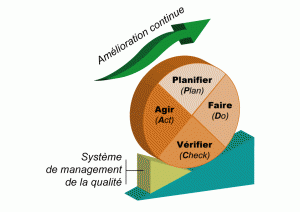
While corporate performance is directly linked to sustainability, it is surprising to see that the sustainable development efforts of an organization are not naturally associated with the improvement of its overall performance. Sustainable development is unfortunately often perceived as a fad or wishful thinking, and is addressed as a separate project, while its integration should be done with consideration for the culture of the company and its challenges. Which company could claim that it has endless resources, that the well-being and commitment of its employees are irrelevant, or that it does not care about its net income? None. This is unequivocal proof that sustainable development should grab the attention of all organizations wishing to succeed.
Sustainable Development to Support Performance
 I’ve never met a single person who was against sustainable development. The Brundtland Commission’s report published in 1987 defines sustainable development as “development which meets the needs of current generations without compromising the ability of future generations to meet their own needs.” Sustainable development must be at the same time economically efficient, socially equitable, and environmentally acceptable. All growth is “sustainable” if it maintains income opportunities for future generations.
I’ve never met a single person who was against sustainable development. The Brundtland Commission’s report published in 1987 defines sustainable development as “development which meets the needs of current generations without compromising the ability of future generations to meet their own needs.” Sustainable development must be at the same time economically efficient, socially equitable, and environmentally acceptable. All growth is “sustainable” if it maintains income opportunities for future generations.
Three Pillars of the Sustainable Development Concept
At the same time, when discussing performance, results, measurements and tracking, opinions are rather mixed. Yet, the very definition of growth and performance implies a strong human factor to ensure the adoption and sustainability of any change. It goes beyond financial principles.[1]
According to Yves Mougin: “Performance lies in the ability of an organization to delivery on its purpose of existence by optimizing the use of resources. Of course, such performance must be sustainable, which calls for the capacity of organizations to adapt to their environment.”
SD as a Performance Improvement Lever
So how can an organization align sustainable development and overall performance improvement for the benefit of everyone? Well, by finding balance between the environmental, social and economic aspects and performance.
Unfortunately, many companies still think that sustainable development efforts are tricky, costly and effort-consuming to implement. However, there are many ways to integrate sustainable development. Indeed, one of the challenges is to avoid the trap of using too many tools that could easily overwhelm and discourage. One of the best approaches is to view sustainable development as one of the factors in achieving your corporate vision, similar to other strategic challenges and objectives. In fact, some companies have already defined certain elements in their strategic plans that are consistent with the three pillars of SD, for example:
Corporate penalties for violations of environmental laws range from $3,000 to $6 million.[4]
An Effective Approach
 An approach that has proven its efficiency and effectiveness, and that also allows to consider performance improvements is the Deming Cycle (or the Deming Wheel).[5] It is a series of steps for a continuous improvement cycle of a product or process: PLAN, DO, STUDY and ACT.
An approach that has proven its efficiency and effectiveness, and that also allows to consider performance improvements is the Deming Cycle (or the Deming Wheel).[5] It is a series of steps for a continuous improvement cycle of a product or process: PLAN, DO, STUDY and ACT.
PLAN
DO
STUDY and ACT
The Key to a Successful SD Approach: Measuring the Results
How do SD measures improve the overall performance of a company? The secret lies in aligning your action plan with the company’s strategic plan in order to identify targets and goals and to define success metrics. Many businesses struggle to translate actions into results. Therefore, it is important to set clear targets and to establish right away how to measure the success of each action or component in order to avoid ending up with an action plan composed mainly of wishful thinking, but hardly measurable in concrete terms.
Your selected key performance indicators (KPI) must be in line with the challenges your company faces and must measure the gains or savings generated by the organizational improvement project. Here are just some of the KPIs in a context of sustainable development:
Social
Environmental
Economic
Bottom line, to improve the overall performance of a company, its sustainable development efforts must be integrated into the global strategic plan, they must respect the corporate culture, they must be in line with the context and reality, they must engage all its employees, and above all, they must be arranged into smaller projects with easily measurable gains and savings. Are you ready?
Marie-Josée Roy
Expert – Sustainable Development & Strategic Management
Totem Performance organisationnelle
[1] http://reactu.blog.lemonde.fr/files/2013/01/croissance-externe.jpg
[2] http://www.totemconseil.com/les-principales-fuites-financieres-rh/
[3] http://www.totemconseil.com/les-principales-fuites-financieres-rh/
[4] http://www.lapresse.ca/environnement/201202/01/01-4491395-des-penalites-environnementales-plus-salees.php